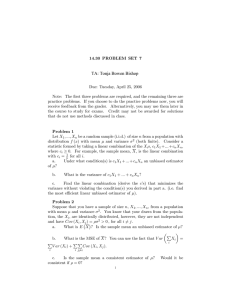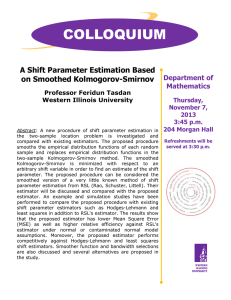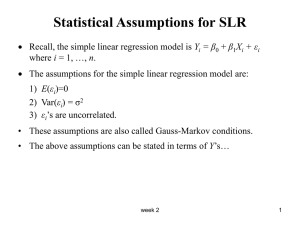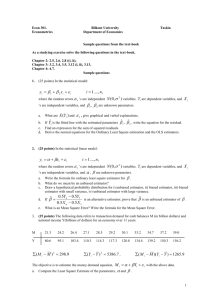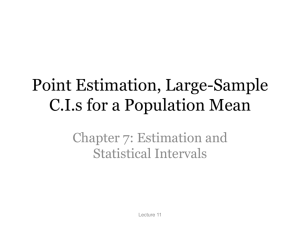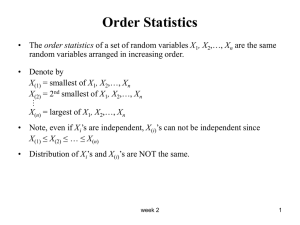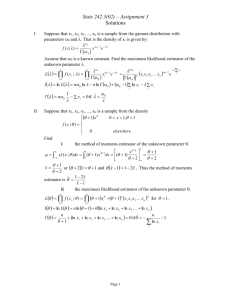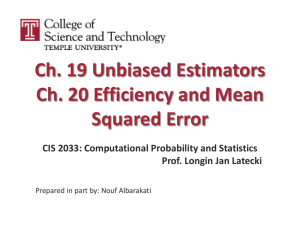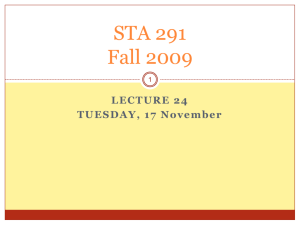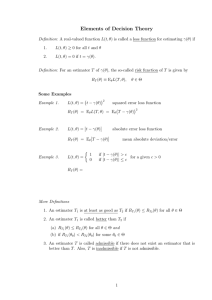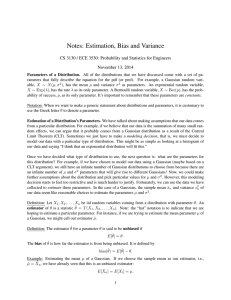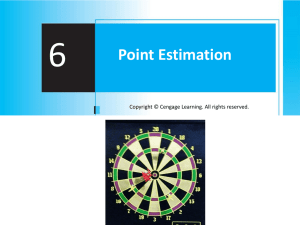Plot with random data showing heteroscedasticity
advertisement
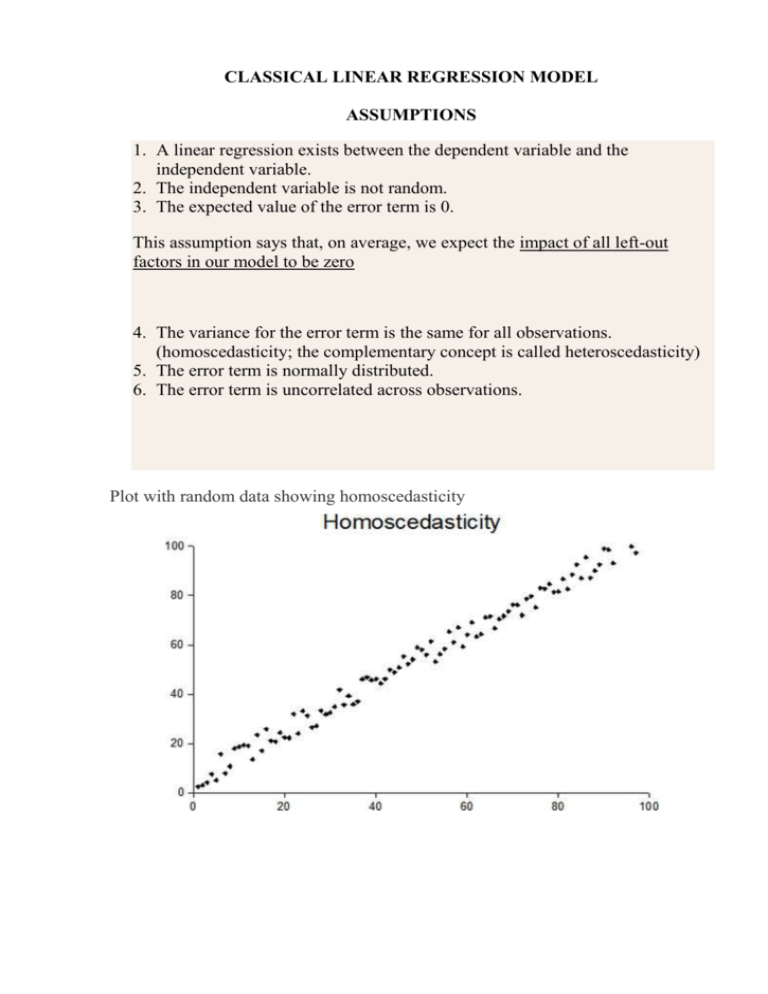
CLASSICAL LINEAR REGRESSION MODEL ASSUMPTIONS 1. A linear regression exists between the dependent variable and the independent variable. 2. The independent variable is not random. 3. The expected value of the error term is 0. This assumption says that, on average, we expect the impact of all left-out factors in our model to be zero 4. The variance for the error term is the same for all observations. (homoscedasticity; the complementary concept is called heteroscedasticity) 5. The error term is normally distributed. 6. The error term is uncorrelated across observations. Plot with random data showing homoscedasticity Plot with random data showing heteroscedasticity If this assumption is violated the errors in one time period are correlated with their own values in other periods and there is the problem of autocorrelation – also sometimes referred to as serial correlation - strictly autocorrelated errors or disturbances. All time series variables can exhibit autocorrelation, with the values in a given period depending on values of the same series in previous periods. PROPERTIES OF THE OLS-ESTIMATORS IN THE CLASSICAL LINEAR REGRESSION MODEL (=ALL ASSUMPTIONS ARE FULFILLED) 1. Unbiasedness Definition of Unbiased Estimators: An estimator for a parameter is unbiased if the expected value of the estimator is the parameter being estimated 2. Consistency Definition of Consistent Estimators: An estimator for a parameter is consistent if the estimator converges in probability to the true value of the parameter; that is, the plim of the estimator, as the sample size goes to infinity, is the parameter itself. 2. Efficiency Definition of Efficient Estimators: An estimator for a scalar parameter is said to be more efficient than another if the first has smaller variance. THE OLS-ESTIMATORS IN THE CLASSICAL LINEAR REGRESSION MODEL ARE SAID TO BE BLUE (best linear unbiased estimators) AS HAVING THE SMALLEST VARIANCE AMONG ALL UNBIASED LINEAR ESTIMATORS



